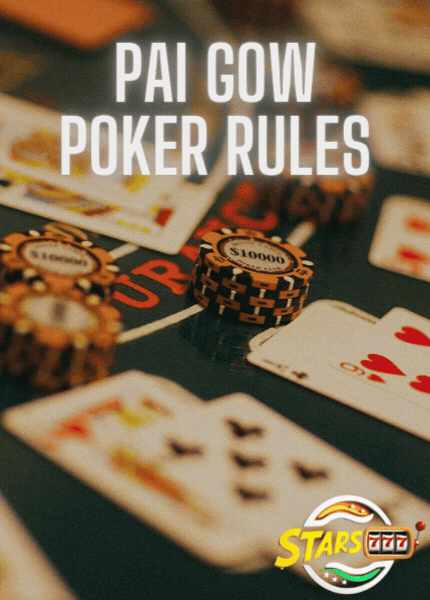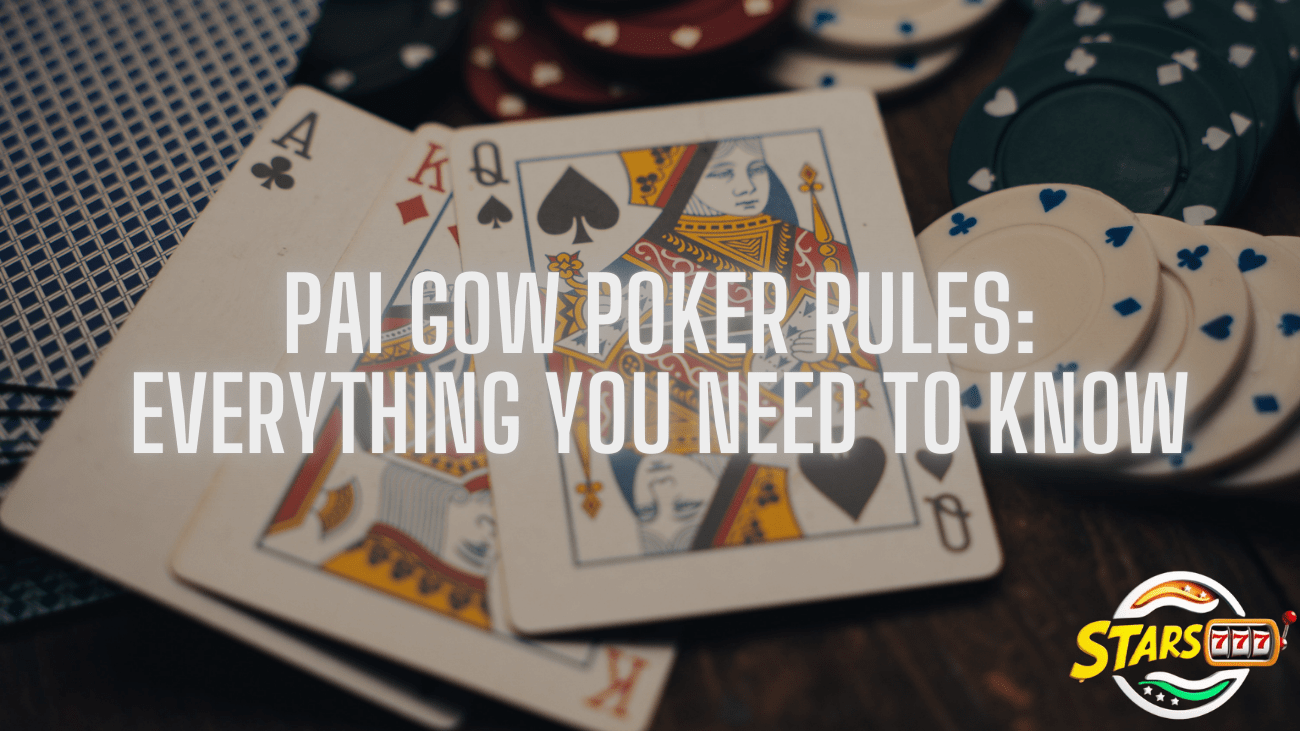Pai Gow Poker Rules: Everything You Need to Know
Pai Gow Poker is a unique blend of traditional Chinese Pai Gow and classic poker. It’s a game that combines strategy, patience, and a bit of luck, making it a favorite among both beginners and seasoned players. If you’re curious about how to play Pai Gow Poker, understanding the rules is essential to enjoy the game and improve your chances of winning. In this blog, we’ll break down the rules of Pai Gow Poker so you can confidently sit down at any table, whether you’re playing in a casino or online.
The Basics of Pai Gow Poker
Pai Gow Poker is played with a standard 52-card deck plus one joker. The objective of the game is to create two poker hands—one with five cards (the “high” hand) and one with two cards (the “low” hand)—that together beat the dealer’s two hands. The game is played between the dealer and players, with each player competing only against the dealer and not against other players.
The Role of the Joker
In Pai Gow Poker, the joker plays a limited but important role. The joker can be used as an ace or to complete a straight, flush, or straight flush in your five-card hand. It can’t be used to form pairs, trips, or other combinations unless you are missing one card for a straight or flush.
How to Play Pai Gow Poker
Here’s a step-by-step breakdown of how a typical round of Pai Gow Poker plays out.
1. Placing the Bets
The game begins with each player placing their bets. Each player is required to place a wager before any cards are dealt. The amount of the wager will determine how much you can win or lose during that round. Casinos may offer side bets or progressive jackpots as an option to add more excitement and potential winnings.
2. Dealing the Cards
Once all the bets are placed, the dealer shuffles the deck and deals seven cards to each player, including themselves. The cards are dealt face down, and each player’s hand is private, known only to them. These seven cards must then be arranged into two hands:
- A five-card hand (the “high” hand)
- A two-card hand (the “low” hand)
3. Setting Your Hands
The five-card hand must always be stronger than the two-card hand. In other words, if you have a pair of aces in your two-card hand, your five-card hand needs to be something stronger like two pairs, three of a kind, or better. This is one of the key strategic elements of Pai Gow Poker, as balancing the strength of your hands can make or break your game.
The five-card hand follows the standard poker hand rankings:
- Royal Flush
- Straight Flush
- Four of a Kind
- Full House
- Flush
- Straight
- Three of a Kind
- Two Pair
- One Pair
- High Card
The two-card hand, on the other hand, can only be a pair or a high card.
4. The Showdown
After all players have set their hands, it’s time for the showdown. The dealer reveals their cards and arranges them into two hands, following the same rules. The dealer’s hands are then compared to each player’s hands.
5. Winning and Losing
To win, both of your hands (high and low) must beat both of the dealer’s hands. Here’s how the comparison works:
- If both your hands beat the dealer’s hands, you win.
- If one of your hands wins and the other loses, the round is a “push,” meaning you neither win nor lose your original bet.
- If both of your hands lose to the dealer’s hands, you lose your bet.
- If one or both of your hands tie with the dealer’s, that hand is considered a win for the dealer.
This “push” result happens quite frequently in Pai Gow Poker, which makes it a slow-paced and more forgiving game compared to other casino games. Since there is no immediate pressure to win every hand, players often have more time to strategize and enjoy the game.

Key Pai Gow Poker Strategies
Now that you know the basic rules of Pai Gow Poker, it’s time to dive into some strategies that can help improve your chances of winning.
1. Balance Your Hands
One of the biggest mistakes new players make is focusing too much on making their five-card hand strong at the expense of their two-card hand. Remember, you need both hands to win. Try to create balanced hands that give you a good chance in both categories. If you have a strong hand, don’t weaken your low hand too much.
For example, if you are dealt two pairs, many players are tempted to put the higher pair in their five-card hand and the lower pair in their two-card hand. This can leave your five-card hand vulnerable. Instead, consider placing both pairs in your five-card hand and leaving a high card in your two-card hand.
2. Use the Joker Wisely
The joker can make or break your hand. Use it to complete straights or flushes in your five-card hand whenever possible. However, if no such opportunities exist, the joker will automatically become an ace. Keep this in mind when deciding how to set your hands.
3. Follow the House Way (Dealer’s Rules)
In most casinos, the dealer is required to set their hands according to predetermined rules known as the “house way.” Learning how the house sets its hands can help you predict the strength of the dealer’s hands and adjust your strategy accordingly. For instance, if the house splits two pairs between the high and low hands, you might want to do the same in situations where your hands are close in value.
4. Low Cards Strategy
When you are dealt a weak hand, such as all low cards, don’t panic. In Pai Gow Poker, it’s possible to win even with a low hand, as long as you balance it well. Focus on keeping your high card in the low hand and making the best possible combination with your remaining cards for the high hand.
5. Playing Conservatively
Pai Gow Poker is a game where the push result happens often. Because of this, players can afford to be conservative in their hand-setting. Don’t take unnecessary risks by trying to make an overly strong five-card hand at the expense of your two-card hand. Playing conservatively increases the chance of a push, which is better than a loss.
Special Rules: Banking in Pai Gow Poker
One unique feature of Pai Gow Poker is the option for players to act as the “bank.” When you bank the game, you are essentially playing against the other players and the dealer, giving you a slight edge due to the fact that you win ties.
However, banking comes with certain risks. You need to have enough money to cover all bets placed by the other players, and you can lose big if the other players beat your hands. Some casinos may also charge a commission for allowing players to bank.
Banking is generally recommended for experienced players who are familiar with the nuances of the game and have a large enough bankroll to withstand potential losses.
Conclusion
Pai Gow Poker is a game of skill, patience, and strategy. By understanding the rules and learning how to set your hands properly, you can improve your chances of winning and make the most of your gaming experience. The balance between your five-card and two-card hands is crucial, and the joker can provide a surprising advantage when used wisely.
Whether you’re playing at a casino or online, Pai Gow Poker offers a slower-paced, low-risk environment perfect for players who enjoy a mix of luck and strategy. With these rules and strategies in mind, you’re ready to take on the dealer and enjoy the unique world of Pai Gow Poker.
- Stars777 – Download and Install the app to play casino games with free starting bonuses and get the chance become billionaire someday!
- Stars777 Privacy Policy — Understand how Stars777 collects, uses, and protects your personal information when you use their platform.
- Stars777 Terms of Service and Guidelines — Learn about the rules and conditions you agree to when accessing and using Stars777’s online casino services.










